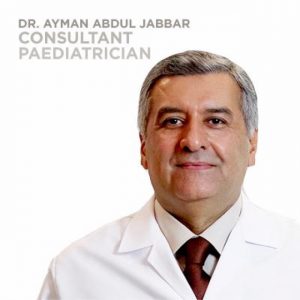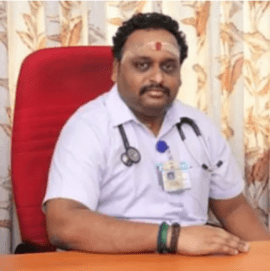An omphalocele is a birth defect of the abdominal wall in which a baby’s intestine or other abdominal organs stick outside the body through the belly button. The protruded organs are covered only by a thin, almost transparent layer of tissue. This condition is also called “exomphalos”.
Omphalocele is viewed as an abdominal wall defect; a hole in the abdominal wall. This condition develops as a baby grows inside the mother’s womb.
During fetal development, the intestines, stomach, liver, bladder, and ovaries or testes develop (between 6 to 10 weeks) initially outside the body and they usually return inside by the 11th week of pregnancy. However, in babies with an omphalocele, these organs do not return but remain outside the abdominal wall, covered with a membrane.
A similar occurrence exists called “gastroschisis”. In gastroschisis, the protruded intestines and other intestines are not covered with a membrane.
- Poor development of lungs
- Heart malformations
- Genetic problems (chromosomal abnormalities)
- Kidney abnormalities
- Congenital diaphragmatic hernia(CDH)
- Pulmonary hypoplasia
- Beckwith-Wiedeman syndrome (a large tongue, high insulin, and low blood sugar).
These associated birth defects most of the time pose a more serious complication on the health of the baby than the omphalocele itself. Omphalocele is not a fatal health condition. It can be fixed when it goes alone.
The survival rate of an infant is over 90% if the baby’s only issue is n omphalocele. The survival rate for babies who have an omphalocele and are intertwined with serious problems with other organs is 70%. For example, heart failure may result in heart dysfunction, kidney failure may result from kidney abnormalities, and pulmonary hypoplasia leads to high blood pressure.
DIAGNOSIS OF OMPHALOCELE
An omphalocele was unusually detected during the second and third trimesters of pregnancies.
The prenatal examination is the examination carried out to identify infants with an omphalocele before birth. It should be done usually at the 20th week of pregnancy.
Other tests are only necessary to test for other problems that often go with the condition. To detect such problems, ultrasound of the kidney and heart, and blood tests for genetic disorders, among other tests should be done. These will give a guide in areas that treatment should be directed to.
With a fetal echocardiogram (ultrasound of the heart), the doctor can know the heart abnormalities before the baby is born. When the child is delivered, the doctor will order X-rays to evaluate abnormalities of other organs. This will reveal the genetic components of the child.
TREATMENT OF OMPHALOCELE
Treatment of an omphalocele baby is dependent on many conditions. These determining conditions may include:
- The Extent of the Condition.
The size of the omphalocele determines the nature and duration of treatment. In the case of a small omphalocele, an operation shall be done soon after delivery to return the intestines to the abdomen and to close up the abdominal wall opening to prevent infection or damage to tissues.
A large omphalocele involves several organs. In this case, surgery is often done in stages because the baby’s abdomen is too small and not matured enough to hold all the organs at once.
The operation involves moving the organs one after the other back into the baby’s body over several days. While the process is on, the exposed or fans are protected by sterile, protective sheeting to stop the risk of infection.
- The Baby’s Age and Overall Health.
Some babies with omphalocele have breathing difficulties because they have undeveloped abnormal cavities. Such babies may need the assistance of a ventilator until they can breathe on their own.
- The Baby’s Ability to Withstand or Tolerate Medications.
Age-appropriate medications are usually used and products that the baby will not react to, to avoid further complications.
- The Parent’s Wish for the Child’s Treatment.
The line of action needs to be discussed with the parents to sure their consent, this includes the treatment options.
If an omphalocele is the only outstanding health problem that your baby has, he or she is expected to recover from it fully after the surgery. But omphalocele is oft3n associated with other congenital defects. They may range from mild to severe and may pose serious complications to the infant’s health.
The prognosis, therefore, depends on these other accompanying conditions. A parents’ talk with the baby’s doctor about the prognosis of their baby is vital and important.
OMPHALOCELE PROGNOSIS
The survival rate for babies with omphalocele as the only issue is 90%. However, the survival rate of omphalocele babies with other serious problems associated with the condition is about 70%.
A total of 16.2% die mainly due to acute renal failure and sepsis associated with omphalocele.
Symptoms
SYMPTOMS OF OMPHALOCELE
An omphalocele is expressable. This is because the protruded abdominal contents covered by the near-transparent membrane are very noticeable–physically seen.
Not all cases of omphaloceles witness the sticking out of all the abdominal organs. There are different sizes of omphaloceles. The number of organs outside will determine the size of the omphalocele. In smaller ones, only the intestines are seen outside the body. In the giant omphalocele, the liver or other organs may remain outside the walls.
Causes
CAUSES OF OMPHALOCELE
The actual cause of omphalocele is not known. Some have tried to link this condition to genetic consideration. It has been observed that infants with omphalocele often have other birth defects such as genetic problems like chromosomal abnormalities, congenital diaphragmatic hernia, and heart and kidney abnormalities. These problems account for the overall baby's health and survival.
FAQ
What is omphalocele associated with?
Omphalocele occurs when the content of the abdomen fails to rotate and returns to the abdominal cavity. In most cases, the intestine and other organs including the liver, spleen, stomach, bladder, ovaries, or testes protrude to the outside of the abdominal walk through the hole in the belly button.
Omphalocele is usually associated with other birth defects which may have more severe complications such as poor lung development, kidney abnormalities, heart malformations, and Beckwith-Wiedeman syndrome.
Can omphalocele be corrected?
An omphalocele can be often corrected after the baby is born. However, complications may arise following certain associated birth defects common in omphalocele babies.
Treatment of omphalocele is using a surgical procedure. In small omphalocele, the protruded intestines are returned soon after the infant's birth and the hole is closed up.
The return of organs inside in large omphalocele is done in stages within several days. During this time, the exposed organs are protected against infection by sterile protective sheeting.
What causes omphalocele?
The actual cause of omphalocele is not known. However, it is viewed as a defect of the abdominal wall. It is a birth defect and is usually associated with other birth defects which may go with greater complications.
Who are the risk candidates of an omphalocele?
Omphalocele is a congenital defect of the abdominal contents that stick out through a hole in the cavity. Infants from age 6 weeks and beyond may be at risk. 30% of babies with omphalocele have genetic abnormalities, most commonly Trisomy 13, Trisomy 18, Trisomy 21, Turner syndrome, or Triploidy.
Some infants with Beckwith-Wiedemann syndrome may also be at risk of omphalocele. Children born after an omphalocele baby may sometimes be at risk.
How early can omphalocele be detected?
Omphalocele can be detected not less than 12 weeks of pregnancy. Diagnosis is done using ultrasound examination.
























































































































































